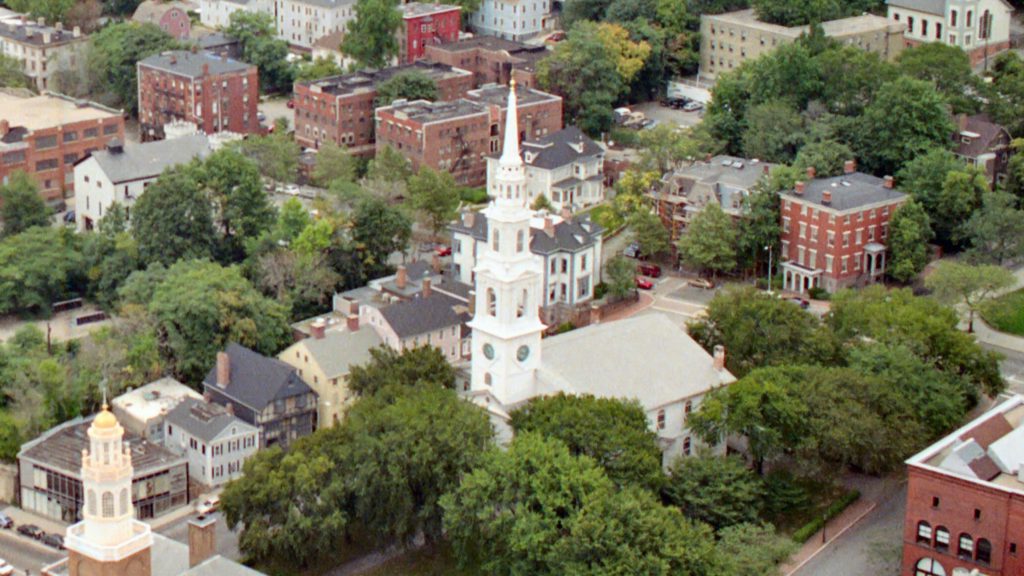In 1630, the Puritans, arriving from the Old World, came to America seeking religious liberty, but the Americas had known the Christian religion for decades—and it wasn’t Puritan. Roger Williams, a Puritan, sought a church position in Boston and later Salem on the provision the church would sever all ties with the Church of England. His belief in the separation of church and state is summed up in his words, “forced worship stinks in the nostrils of God,” and this conviction would result in the First Baptist Church in America.
Roger Williams was born in England in 1603. He studied at Cambridge and, though ordained by the Church of England, it was there he became a Puritan. While still in England he married Mary Bernard and on December 1, 1630, the two boarded the ship Lyon in Bristol and sailed to Boston.
Williams believed that church and state were principally different. He wrote, “The civil sword may make a nation of hypocrites and anti-Christians, but not one Christian.” He further declared the radical idea that it was a “solemn public lie” that the King of England could grant land to settlers that hadn’t been purchased from the natives.
In 1633, Williams became an assistant to the minister of a church in Salem and eventually took over as minister. By 1635 his radical ideas had run afoul of the magistrates and he was convicted of sedition, heresy, and refusing to swear an oath of allegiance in God’s name (he considered the use of God’s name in a civil proceeding to be blasphemy). Facing banishment back to England, Williams fled and eventually came to Rhode Island and started a settlement he called Providence.
He started a church in Providence, beginning in his home. This congregation became the First Baptist Church in the New World. Williams resigned from the church by 1639, but the church carried on, electing elders from the existing congregation. It would establish its first church building in 1700, which was expanded over the years until growing membership led to the dedication of its current building in 1775. Seating 1,200 people it could accommodate a third of the population of Providence’s population at the time. Shortly after the main meetinghouse’s dedication the spire was erected, the first on a Baptist church in New England, and has survived to this day. Its architecture is traditional New England with English Georgian, borrowed from Anglican church styles, superimposed onto it, making this historic landmark a truly unique and iconic American church.

